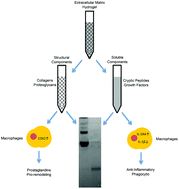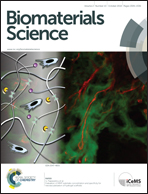Fractionation of an ECM hydrogel into structural and soluble components reveals distinctive roles in regulating macrophage behavior
Abstract
Extracellular matrix (ECM) derived from mammalian tissues has been utilized to repair damaged or missing tissue and improve healing outcomes. More recently, processing of ECM into hydrogels has expanded the use of these materials to include platforms for 3-dimensional cell culture as well as injectable therapeutics that can be delivered by minimally invasive techniques and fill irregularly shaped cavities. At the cellular level, ECM hydrogels initiate a multifaceted host response that includes recruitment of endogenous stem/progenitor cells, regional angiogenesis, and modulation of the innate immune response. Unfortunately, little is known about the components of the hydrogel that drive these responses. We hypothesized that different components of ECM hydrogels could play distinctive roles in stem cell and macrophage behavior. Utilizing a well-characterized ECM hydrogel derived from urinary bladder matrix (UBM), we separated the soluble and structural components of UBM hydrogel and characterized their biological activity. Perivascular stem cells migrated toward and reduced their proliferation in response to both structural and soluble components of UBM hydrogel. Both components also altered macrophage behavior but with different fingerprints. Soluble components increased phagocytosis with an IL-1RAhigh, TNFαlow, IL-1βlow, uPAlow secretion profile. Structural components decreased phagocytosis with a PGE2high, PGF2αhigh, TNFαlow, IL-1βlow, uPAlow, MMP2low, MMP9low, secretion profile. The biologic activity of the soluble components was mediated by Notch and PI3K/Akt signaling, while the biologic activity of the structural components was mediated by integrins and MEK/ERK signaling. Collectively, these findings demonstrate that soluble and structural components of ECM hydrogels contribute to the host response but through different mechanisms.


 Please wait while we load your content...
Please wait while we load your content...